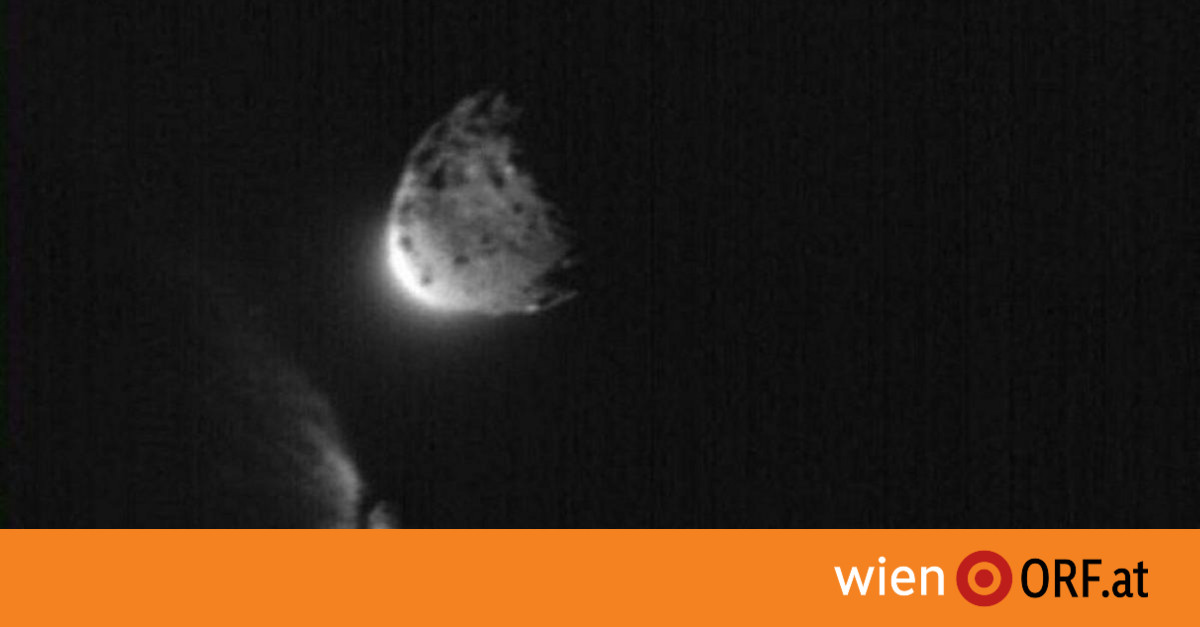The chances of this happening are “not very high” in the next few years, but they are not zero, according to the Viennese impact researcher Christian Kopperl of the APA. On Sunday, the eighth “Planetary Defense Conference” of the International Astronautics Academy (IAA) bringing together more than 200 experts will kick off with an informational event in the ballroom of the Austrian Academy of Sciences (ÖAW) entitled “The Caution Effect: Planetary Defense and the DART Mission.” In addition to Köberl, NASA Planetary Defense Officer Lindley Johnson will speak there about his perspectives on how to deal with potential hazards emanating from rocks from space.
Focus on the DART task
On the one hand, the topic has been and remains a grateful source of ideas for the science fiction genre, on the other hand, considerations of real defense systems have become more concrete. We’re still a long way from implementation, but the DART mission has given our first glimpse into the possibilities for asteroid deflections. “It was tried for the first time and it worked,” says Kupperl.
The mission and its handling are the main focus of the conference, which is also attended by the Vienna-based UNOOSA (United Nations Office for Outer Space Affairs) and the European Space Agency (ESA). It is clear that asteroids appear again and again on the screen of the observer, which have a certain probability of collision with the Earth.
Lots of open questions
Not much is known about the objects’ size, number, trajectory and nature, according to Koeberl, professor of impact research and planetary geology at the University of Vienna and chair of the OeAW’s Earth Sciences Committee. According to the geochemist, the latter in particular is not important for any diversionary maneuvers. If you shoot at a loose accumulation of material – a kind of “flying sandbar” – you do much less damage with the same impact energy than with a solid object.
Incidentally, the effects of the DART impact will soon be analyzed by the ESA Hera mission, which is heading straight for the asteroid Dimorphos to find out exactly what the DART probe did there. The Viennese space company Beyond Gravity Austria is supplying spare parts for the Hera probe, which is scheduled to launch in 2024.
If the worst comes to the worst, there are also many questions about how to communicate such an imminent impact. In addition, it is not certain that politicians and parts of the population will take scientific warnings seriously. These are all issues that experts want to discuss. Cuperell and colleagues recently wrote a chapter on this in a book honoring the life of American geologist Walter Alvarez.
defense system in the distant future
In any case, the research community exercises the state of emergency continuously. This is how detections of celestial bodies on a collision course are invented, Koberl explained, in order to constantly improve instruments for analyzing possible orbits and locations of impact.
In any case, there is still a long way to go before a real defense system for the Earth against cosmic dangers. “We still have a long way to go before we stand still,” says the influential researcher. Having the devices ready to use in an emergency is also a matter of money. However: “It’s nice when people talk about it.” And last but not least, vaccine development in the coronavirus pandemic has shown that technology development can happen very quickly if there is the necessary focus and international cooperation.

“Total coffee aficionado. Travel buff. Music ninja. Bacon nerd. Beeraholic.”








More Stories
Coral Seeding: Artificial Insemination Makes Coral More Heat Tolerant
Fear, Anger, and Denial: How People Respond to Climate Change – Research
LKH Graz: Using radiation to combat heart arrhythmias